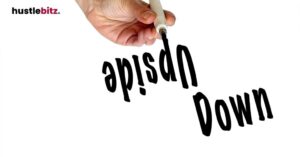Self-assessment tools play a crucial role in gauging your motivation and fostering personal growth. They enhance self-awareness by identifying strengths and weaknesses in your drive. Common tools, such as skills inventories and personality assessments, provide valuable insights into your motivations. By setting clear evaluation criteria, you can establish measurable indicators to track progress effectively. Popular assessments, like the Motivation Assessment Scale, help you understand intrinsic and extrinsic motivators. Following your evaluation, actionable steps can streamline your path to improvement and success. Exploring these tools further can reveal tailored strategies to maximize your motivational potential.
Key Takeaways
- Utilize various self-assessment tools like skills inventories and personality assessments to evaluate your motivation levels and identify areas for improvement.
- Establish clear evaluation criteria and benchmarks to measure your personal growth and motivation effectively over time.
- Implement popular assessments such as the Motivation Assessment Scale and Self-Motivation Inventory to gain insights into your intrinsic and extrinsic motivation factors.
- Develop a personal scorecard to systematically track your progress toward key objectives and reflect on performance indicators.
- Analyze your assessment results to pinpoint strengths and weaknesses, setting realistic SMART goals to enhance your motivation and focus.

Importance of Self-Assessment
Self-assessment is a crucial process that enables individuals to evaluate their skills, motivations, and progress, fostering personal and professional growth.
This reflective practice is essential in enhancing self-awareness, as it prompts individuals to consider their strengths, weaknesses, and overall performance. By engaging in self-assessment, individuals can gain insights into their intrinsic motivations, allowing them to align their goals with their aspirations.
One of the primary benefits of self-assessment is the identification of areas for improvement. By recognizing gaps in skills or knowledge, individuals can take actionable steps toward their development. This process not only enhances their capabilities but also increases their confidence in pursuing future opportunities.
Furthermore, motivation assessment plays a vital role in determining what drives an individual, facilitating a deeper understanding of personal values and interests.
In addition to self-reflection, seeking feedback and support from others is imperative in the self-assessment process. Constructive criticism from peers, mentors, or supervisors can provide valuable perspectives that may not be evident through self-evaluation alone.
This external input can illuminate blind spots and encourage individuals to refine their approaches, ultimately leading to enhanced performance and fulfillment.
Types of Self-Assessment Tools
Various self-assessment tools are available to help individuals evaluate their skills, motivations, and areas for improvement effectively. These tools can range from formal assessments, such as standardized questionnaires, to informal methods like journaling and self-reflection exercises. Each type serves a unique purpose in the realm of personal development.
One common type of self-assessment tool is the skills inventory, which allows individuals to catalog their competencies. This tool helps identify areas where they excel and those in need of enhancement.
Similarly, personality assessments, such as the Myers-Briggs Type Indicator or the Enneagram, help individuals understand their behavioral tendencies and how they relate to their motivation levels.
Another effective approach involves peer feedback mechanisms, where colleagues or friends provide insights into an individual’s strengths and weaknesses. This external feedback can enhance self-reflection, enabling a more rounded view of one’s abilities and motivations.
Moreover, goal-setting worksheets serve as practical self-assessment tools, guiding individuals to articulate their aspirations and evaluate their progress over time. These tools not only foster self-awareness but also empower individuals to identify areas requiring attention for future growth.
Ultimately, the diversity of self-assessment tools available allows individuals to tailor their approach to personal development, ensuring a more comprehensive understanding of their motivations and capabilities. Engaging with these tools can significantly enhance one’s journey toward self-improvement and fulfillment.
Setting Your Evaluation Criteria

Establishing clear evaluation criteria is essential for effectively measuring personal growth and identifying areas for improvement. When utilizing self-assessment tools, defining what success looks like allows individuals to gauge their motivation levels accurately. Evaluation criteria serve as benchmarks against which one can assess progress and gain valuable insights into personal and professional development.
To set effective evaluation criteria, one should first consider the specific aspects of motivation they wish to assess. This may include goal attainment, persistence in challenging situations, or overall enthusiasm towards tasks. Next, it is crucial to create measurable indicators that can be tracked over time. For instance, instead of simply stating a desire to be more motivated, an individual might specify the number of goals set and achieved within a given timeframe.
Incorporating both qualitative and quantitative measures enhances the evaluation process. Qualitative insights, such as self-reflections or feedback from peers, can provide depth to the data collected through quantitative metrics, like completion rates or time management statistics. This comprehensive approach not only highlights areas of improvement but also reinforces motivation by recognizing progress.
Ultimately, well-defined evaluation criteria empower individuals to take charge of their growth journey. By consistently measuring against these benchmarks, one can remain focused on their objectives and adapt strategies as needed, leading to sustained motivation and continuous enhancement of skills and performance.
Popular Motivational Assessments

A variety of popular motivational assessments are available to help individuals evaluate their drive and commitment towards achieving personal and professional goals. These self-assessment tools offer structured methodologies for individuals to uncover their intrinsic and extrinsic motivators, enabling them to align their aspirations with appropriate strategies accordingly.
One widely recognized assessment is the Motivation Assessment Scale (MAS), which provides insights into various factors influencing motivation, including environmental and psychological aspects.
Another prominent tool is the Self-Motivation Inventory (SMI), designed to gauge personal motivation levels and identify areas for self-improvement. Both assessments empower users to reflect on their current motivational state and foster a deeper understanding of their ambitions.
Additionally, the Work Extrinsic and Intrinsic Motivation Scale (WEIMS) allows individuals to explore the balance between internal drive and external rewards. By utilizing these assessments, users can gain valuable insights into their motivational dynamics, which aids in crafting personalized action plans for goal achievement.
Incorporating the findings from these assessments into daily routines can significantly enhance one’s motivation. For instance, recognizing specific drivers can lead to the development of tailored strategies that enhance focus and commitment.
Ultimately, popular motivational assessments serve as essential tools for self-discovery and growth, providing individuals with the clarity needed to pursue their ambitions with renewed vigor.
Developing a Personal Scorecard

Creating a personal scorecard involves systematically tracking key performance indicators that reflect individual goals and aspirations. This tool serves as a vital self-assessment instrument, enabling individuals to measure their progress in both personal and professional domains. A well-structured scorecard typically includes quantifiable metrics aligned with specific learning objectives, providing a clear framework for evaluation.
To develop an effective personal scorecard, start by identifying your key objectives. These may include areas such as career advancement, skill acquisition, or personal well-being. Once established, select relevant performance indicators that will help you gauge your progress toward these goals. For instance, if one of your objectives is to enhance communication skills, indicators might include the number of presentations delivered or feedback received from peers.
Regularly updating your scorecard is essential for maintaining relevance. This process allows for the incorporation of feedback and support from mentors or colleagues, fostering a deeper understanding of areas needing improvement. Additionally, reviewing your scorecard can provide valuable insight into patterns of success and areas requiring more attention.
Interpreting Your Results

Interpreting the results of your personal scorecard is crucial for understanding your progress and identifying areas for further development. By effectively analyzing the outcomes of your self-assessment tools, you can gain valuable insights into your motivation levels and overall performance.
Here are four key steps to help you interpret your results:
- Identify Strengths: Look for areas where your scores are high. These strengths can serve as the foundation for your future learning and development initiatives.
- Recognize Weaknesses: Pay close attention to lower scores. These represent opportunities for growth and should be prioritized in your development plan.
- Seek Feedback: Share your scorecard results with a trusted colleague or mentor. Their perspective can provide additional clarity and help you understand how your self-assessment aligns with external observations.
- Set Realistic Goals: Based on your interpretation of the results, establish clear and achievable goals that can boost your motivation. This will guide your efforts toward improvement in specific areas.
Actionable Steps Post-Assessment

Following your self-assessment, it is essential to devise a structured plan of actionable steps that will facilitate your growth and enhance your motivation. Utilizing self-assessment tools effectively means not only understanding your current state but also taking informed actions based on that understanding. Here are some actionable steps you can take:
- Analyze Your Results: Review your self-assessment results and identify areas where you scored lower. This will help you understand where to focus your efforts.
- Set Clear Goals: Establish specific, measurable, achievable, relevant, and time-bound (SMART) goals based on your analysis. Goals will serve as a roadmap for your motivation journey.
- Seek Feedback: Engage with mentors, peers, or instructors to gain constructive feedback on your performance. This will provide additional perspectives and help you refine your approach.
- Create a Reflection Journal: Encourage students to reflect on their progress regularly. Documenting thoughts and experiences can help track changes and boost motivation.
- Adapt Strategies: Implement different strategies as you progress. If certain methods are not yielding results, be flexible and willing to change your approach.
Here’s a table summarizing these steps:
| Action Step | Purpose |
| Analyze Your Results | Identify areas for improvement |
| Set Clear Goals | Create a roadmap for action |
| Seek Feedback | Gain external perspectives |
| Create a Reflection Journal | Track progress and insights |
| Adapt Strategies | Ensure effectiveness and flexibility |
Final Thoughts
Self-assessment tools are powerful instruments that can help you gauge your motivation and foster continuous growth. By evaluating your strengths, identifying areas for improvement, and setting clear goals, you create a roadmap for personal and professional development. Regular reflection, feedback, and adaptability are essential for maintaining momentum. Use these insights to stay on track and cultivate a mindset that prioritizes progress over perfection. With the right approach, self-assessment can become a cornerstone of your motivation journey, helping you achieve your fullest potential.




